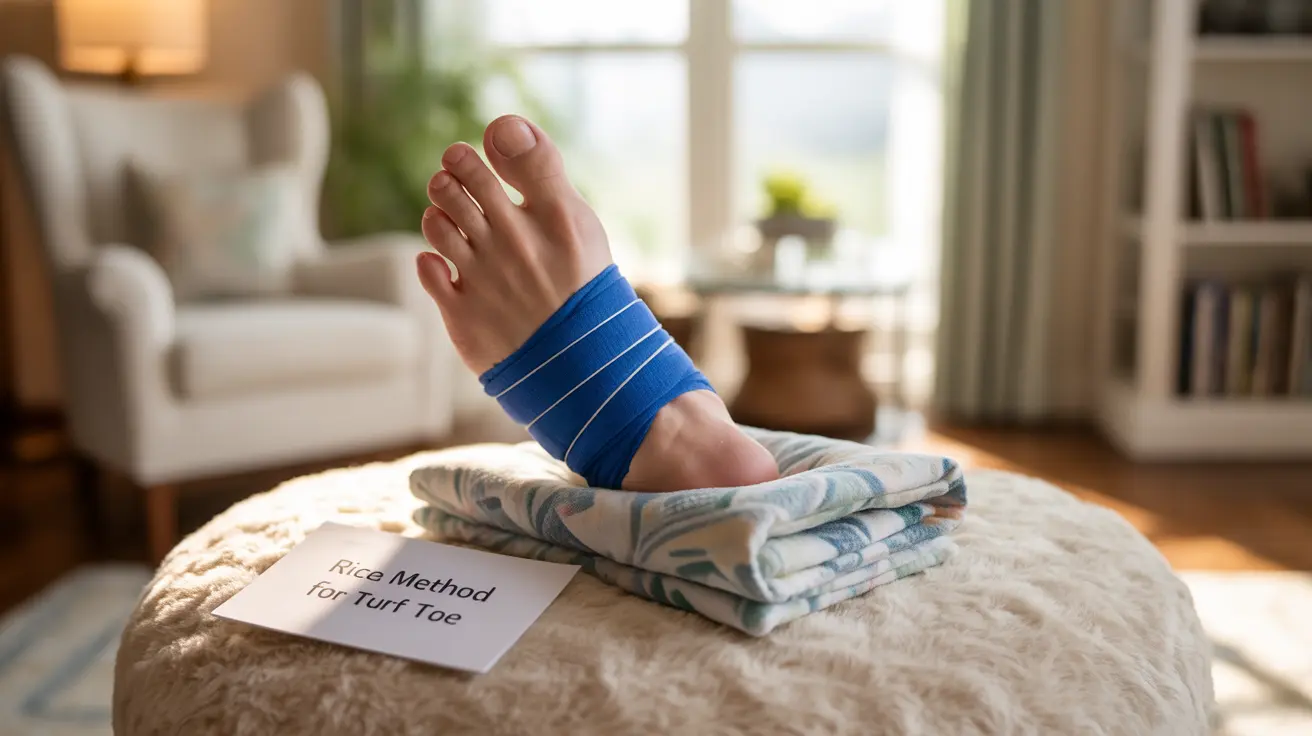Turf toe, a painful sprain of the main joint of the big toe, can significantly impact your daily activities and athletic performance. Understanding how to properly treat this condition at home is crucial for a smooth recovery and preventing long-term complications.
While professional medical care may sometimes be necessary, many cases of turf toe can be effectively managed with proper home treatment strategies. This guide will walk you through evidence-based home care methods, appropriate footwear choices, and safe activities during recovery.
Understanding the RICE Method for Turf Toe
The RICE method forms the cornerstone of turf toe treatment at home. This proven approach helps reduce pain and inflammation while promoting healing:
- Rest: Avoid activities that cause pain or stress to the toe
- Ice: Apply cold therapy for 15-20 minutes at a time
- Compression: Use elastic bandages to reduce swelling
- Elevation: Keep the foot raised above heart level when possible
For optimal results, implement the RICE protocol immediately after injury and continue for the first 48-72 hours.
Proper Footwear Selection During Recovery
Choosing appropriate footwear is essential for supporting the healing process:
- Stiff-soled shoes to minimize toe flexion
- Athletic shoes with good arch support
- Shoes with a wider toe box to prevent pressure
- Orthotic inserts if recommended by a healthcare provider
Avoid flip-flops, flexible shoes, or any footwear that allows excessive toe movement during the healing period.
Safe Activities During Recovery
While healing from turf toe, focus on low-impact activities that don't stress the injured joint:
- Swimming (with proper waterproof protection)
- Upper body exercises
- Stationary cycling (with stiff-soled shoes)
- Gentle stretching exercises as pain allows
Always listen to your body and stop any activity that causes pain or discomfort in the affected toe.
Timeline for Recovery
Recovery time varies depending on injury severity:
- Grade 1 (mild): 2-3 weeks with proper care
- Grade 2 (moderate): 4-6 weeks
- Grade 3 (severe): 8-12 weeks or longer
Consistent adherence to treatment protocols and avoiding re-injury are crucial for optimal healing times.
When to Seek Medical Care
While home treatment is often effective, certain symptoms warrant professional medical attention:
- Severe pain or swelling that doesn't improve with RICE
- Inability to bear any weight on the affected foot
- Visible deformity or discoloration
- Numbness or tingling in the toe
- Symptoms that persist beyond two weeks of home care
Frequently Asked Questions
How can I treat turf toe at home using the RICE method?
Apply the RICE method by resting the affected foot, applying ice packs for 15-20 minutes every 2-3 hours, using compression bandages to reduce swelling, and keeping the foot elevated above heart level when possible.
What kind of shoes should I wear to support healing from turf toe?
Choose shoes with stiff soles to limit toe movement, adequate arch support, and a roomy toe box. Athletic shoes with proper support or specialized orthotic inserts are recommended during recovery.
When should I see a doctor instead of continuing home treatment for turf toe?
Seek medical attention if you experience severe pain or swelling that doesn't improve with home care, inability to bear weight, visible deformity, numbness or tingling, or if symptoms persist beyond two weeks.
Are there safe exercises or activities I can do while recovering from turf toe?
Yes, you can engage in low-impact activities such as swimming, upper body exercises, and stationary cycling with appropriate footwear. Avoid activities that cause pain or put stress on the toe joint.
How long does it typically take for a mild turf toe injury to heal with home care?
A mild (Grade 1) turf toe injury typically takes 2-3 weeks to heal with proper home care and adherence to treatment protocols. More severe cases may require longer recovery periods.




